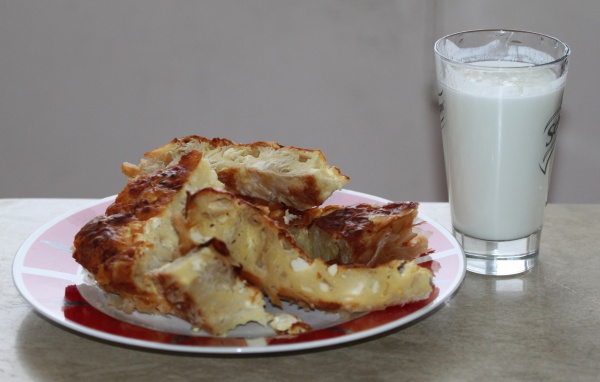Facts About Banitsa
Banitsa is a cherished Bulgarian pastry that is perfect for breakfast or as a snack. This delectable dish is crafted by layering a mixture of beaten eggs, yogurt, and white brined cheese between sheets of filo pastry, then baking it to a golden perfection. Banitsa can be enjoyed either hot or cold, and it is often paired with yogurt, ayran (a refreshing yogurt drink), or boza (a fermented beverage).
There are numerous variations of banitsa to explore. You might encounter versions with spinach or sweet varieties filled with milk or pumpkin. Other popular fillings include meat, vegetables, or fruits, showcasing banitsa's versatility.
The name "banitsa" originates from an Old Bulgarian word meaning "to fold." Whether you use homemade or store-bought filo sheets, the process involves filling the pastry with a delightful mixture of cheese, yogurt, and eggs. Beyond the classic version, you can get creative with different fillings like vegetables, meat, or even sweet options such as apples or pumpkin.
Banitsa is more than just a delicious dish; it is a symbol of Bulgarian culture and traditions. It is especially popular during Christmas and New Year's Eve celebrations. People often add lucky charms, such as small pieces of dogwood branches, to the pastry. These charms symbolize health and longevity, and each one comes with a wish for happiness, success, or other good fortunes. Sometimes, coins or written fortunes wrapped in tin foil are also included. When the banitsa is cut into pieces, each person receives a slice with a charm inside, predicting their fortune for the coming year.
This dish holds a special place in Bulgarian hearts, deeply tied to holiday traditions and cultural symbolism. Interestingly, the term "banitsa" is also used metaphorically in Bulgaria to describe something that is crumpled or poorly maintained, much like disheveled paperwork.
Whether you're savoring it during a festive occasion or simply enjoying a slice with your morning coffee, banitsa offers a delicious way to experience a piece of Bulgarian heritage.

 Romania
Romania